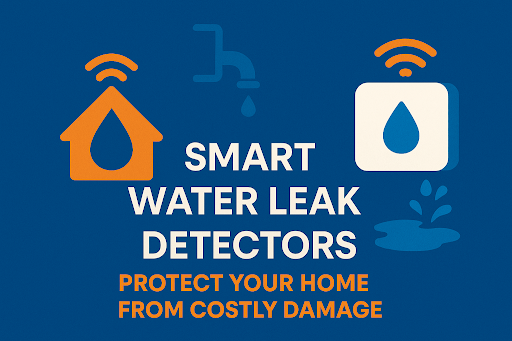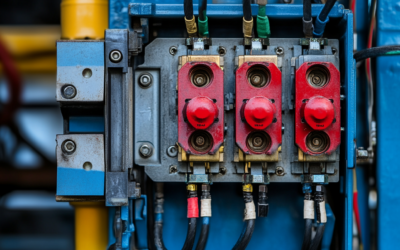Have you ever heard of gas pipe electrical bonding? It’s like having a special escape route for electricity!
If you have ever been through gas pipe installation work or have seen someone doing that, you should be familiar with the electrical bonding term. But if you want to know exactly what gas pipe electrical bonding means, this article is for you.
Let’s get started!
Figure 1
What is Electrical Bonding?
Electrical bonding connects all metal parts and equipment in a building with a wire or conductor to create a continuous electrical path. This connection helps ensure that, if there’s a fault (like a loose wire touching metal), the electricity flows safely back to the ground without causing shocks or fires. It’s like linking all the metal parts to share the same electrical charge, reducing the risk of dangerous voltage differences.
Why is Gas Pipe Electrical Bonding Essential?
One of the first lessons new electricians learn is that electricity will always seek the path of least resistance to reach the ground.
Imagine electricity as water flowing through pipes. As water flows from high to low pressure, electricity flows from high to low voltage, aiming to reach the ground because that’s lowest point.
When we say electricity looks for the path of least resistance, it will travel through any available route that offers the easiest and quickest way to the ground. If there’s a problem in the electrical system, such as a damaged wire or a fault, electricity might take an unintended path, potentially through a person or a flammable object, which can be dangerous.
Usually, gas pipes shouldn’t carry any electrical current. But suppose something goes wrong and electricity gets on them. In that case, this connection (electrical bonding) provides a safe path for it to flow directly to the ground. This protects you from getting a shock and helps prevent damage to the pipes themselves.
Bonding Vs. Grounding
Grounding and bonding work together to ensure electrical safety by managing fault currents in different ways.
Bonding connects all exposed metal parts that aren’t meant to carry electricity (like metal pipes, appliances, and frames) with a wire or conductor. This creates a continuous path for the fault current to flow back to the power source. Also, bonding allows the circuit breaker or fuse to detect the fault and quickly shut off the electricity, preventing shocks or fires.
On the other hand, grounding connects the bonded system to the earth itself. It provides a safe path for excess electricity (like from lightning or a power surge) to flow harmlessly into the ground. Grounding helps dissipate this energy and prevents it from building up dangerously in the electrical system.
Bonding protects people by reducing the risk of electric shocks from touching exposed metal parts. It ensures that if a fault occurs, the circuit will trip and stop the flow of electricity.
However, grounding protects the system by safely releasing excess electrical energy into the earth, reducing the risk of fires, equipment damage, or further electrical issues.
In a nutshell, bonding and grounding create a complete safety system. Bonding handles fault currents locally, while grounding connects the system to a universal safety net (the earth) for managing high-energy events.
When You Are Required to Bond the Gas Pipe?
Iron Gas Pipe Electrical Bonding
In Philadelphia, the electrical code mandates that metal gas piping systems be bonded to the building’s grounding system to ensure safety. This requirement aligns with the National Electrical Code (NEC) Section 250.104(B), which specifies that metal piping likely to become energized must be bonded to the grounding electrode system.
Key Points:
- Bonding Requirement: Metal gas piping must be bonded to the building’s grounding system to prevent electrical hazards.
- Bonding Methods: The NEC allows several methods for bonding metal gas piping, including:
- Connecting to the equipment grounding conductor of the circuit that could energize the piping.
- Bonding to the service equipment enclosure.
- Connecting to the grounded conductor at the service.
- Attaching to the grounding electrode conductor, if appropriately sized.
- Connecting to one or more grounding electrodes.
- Sizing of Bonding Conductors: The bonding conductor’s size should be determined based on NEC Table 250.122, considering the rating of the circuit that might energize the piping system.
Figure 2
CSST Gas Pipe Electrical Bonding
Philadelphia Residential Code Section G2411.1.1 (310.1.1) states that corrugated stainless steel tubing (CSST) gas piping systems, or systems with any CSST, must be bonded to the electrical grounding system or a lightning protection grounding system (if one exists).
- The bonding jumper must connect to a metal pipe, fitting, or CSST fitting.
- The jumper used for bonding must be at least size 6 AWG copper or equivalent.
- The bonding jumper should not exceed 75 feet between the gas piping and the grounding system. If additional grounding electrodes are used, they must also connect to the main electrical or lightning protection grounding system.
- Bonding connections must follow NFPA 70 standards.
- The devices used for bonding must be approved and meet UL 467 standards.
Some CSST manufacturers offer CSST with a special outer jacket that conducts electricity safely and prevents arcing. Always check the manufacturer’s instructions for installation requirements.
Figure 3
Figure 4
Conclusion
Understanding gas pipe electrical bonding is essential for maintaining a safe and functional electrical system in your home. Bonding ensures metal pipes provide a safe path for stray electricity, preventing shocks and fires. At the same time, grounding connects the system to the earth to manage excess energy. Together, these safety measures protect both people and property from electrical hazards.
Whether installing a new gas piping system or working with CSST, it’s important to follow local codes, like the Philadelphia Residential Code, and adhere to manufacturer guidelines. Properly bonding and grounding gas pipes creates a safer environment and helps your electrical system operate as intended. Safety is always the priority!








0 Comments